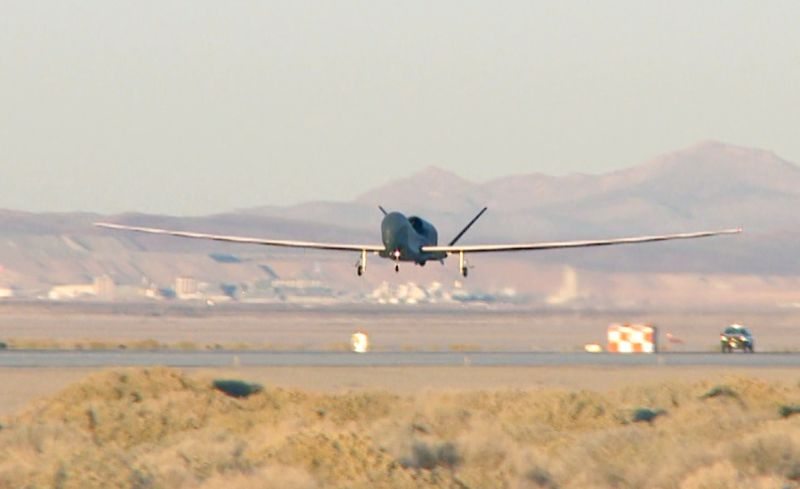Northrop Grumman submitted its final proposal last week for the NATO Alliance Ground Surveillance (AGS) core capability – a trans-Atlantic cooperation that will meet the security challenges of the 21st century.
“The updated proposal offers an affordable, executable program that will provide an operationally relevant system to the Alliance,” said Pat McMahon, sector vice president of Northrop Grumman Aerospace Systems’ Battle Management and Engagement Systems Division.
“NATO AGS will be a critical component of the Alliance’s response to threats to peace now and in the future.”
Based on the Block 40 configuration of the RQ-4 Global Hawk high-altitude, long-endurance unmanned aircraft, the NATO AGS system will provide persistent intelligence, surveillance and reconnaissance to ground, maritime and air commanders, anytime and anywhere in the world. A contract award is anticipated in July 2011.
The NATO AGS includes an air segment consisting of six Block 40 Global Hawks that will be missionized to meet NATO requirements. They will be equipped with Northrop Grumman’s Multi-Platform Radar Technology Insertion Program (MP-RTIP) ground surveillance radar sensor, which will be capable of detecting and tracking moving objects throughout the observed areas as well as providing radar imagery of target locations and stationary objects.
“The ground element, which provides real-time data, intelligence and target identification to commanders within and beyond line of sight, will be wholly produced by our European industry partners, offering the potential for national re-use in other programs as well as direct work in the program for the participating nations,” said Matt Copija, director of Northrop Grumman’s NATO AGS program.
“As NATO’s highest acquisition priority and Europe’s highest visibility program, NATO AGS also represents the first international sale of the Block 40 Global Hawk.”
Approved by heads of state and government as a priority capability initiative at the 2010 Lisbon Summit in support of the new strategic concept, the NATO AGS system will empower a network-enabled approach to support interoperability with national systems and to perform the entire range of NATO missions, including force protection, border and maritime security, counter- and anti-terrorism, crisis management, peacekeeping and enforcement, and natural disaster relief.
It also includes mobile and transportable ground stations and a world-class mission operation support center at its main operating base in Sigonella, Italy.
Flying up to 60,000 feet for more than 32 hours, the combat-proven Global Hawk has flown more than 53,000 hours thus far. The U.S. Air Force Block 30 Global Hawks continue to fly relief support missions over Japan in response to the tragic 9.0-magnitude earthquake and resulting tsunami, and are also supporting the NATO-led coalition effort in support of Operation Odyssey Dawn over Libya.
The Global Hawk was also used for disaster relief and recovery efforts following the 7.0-magnitude earthquake that struck Haiti in 2010, Hurricane Ike on the Gulf Coast in 2009, and the California wildfires in 2007 and 2008.
As prime contractor, Northrop Grumman worked closely with the NATO Alliance Ground Surveillance Management Agency (NAGSMA) and its industry team, which includes companies from each of the 14 nations participating in the acquisition, to refine the proposal to meet NATO requirements.
NAGSMA, which was chartered to acquire the NATO-owned and operated core capability, is responsible for the procurement of the NATO AGS capability until it has reached full operational capability. NAGSMA was established in September 2009 after all participating nations signed the AGS Program Memorandum of Understanding.










